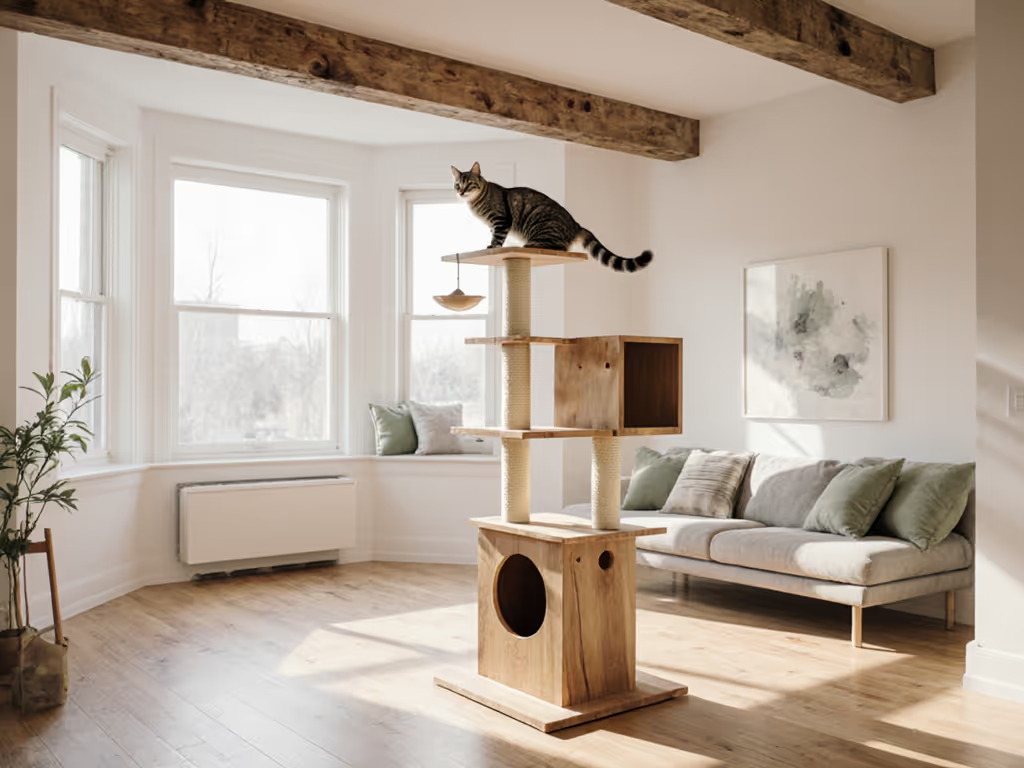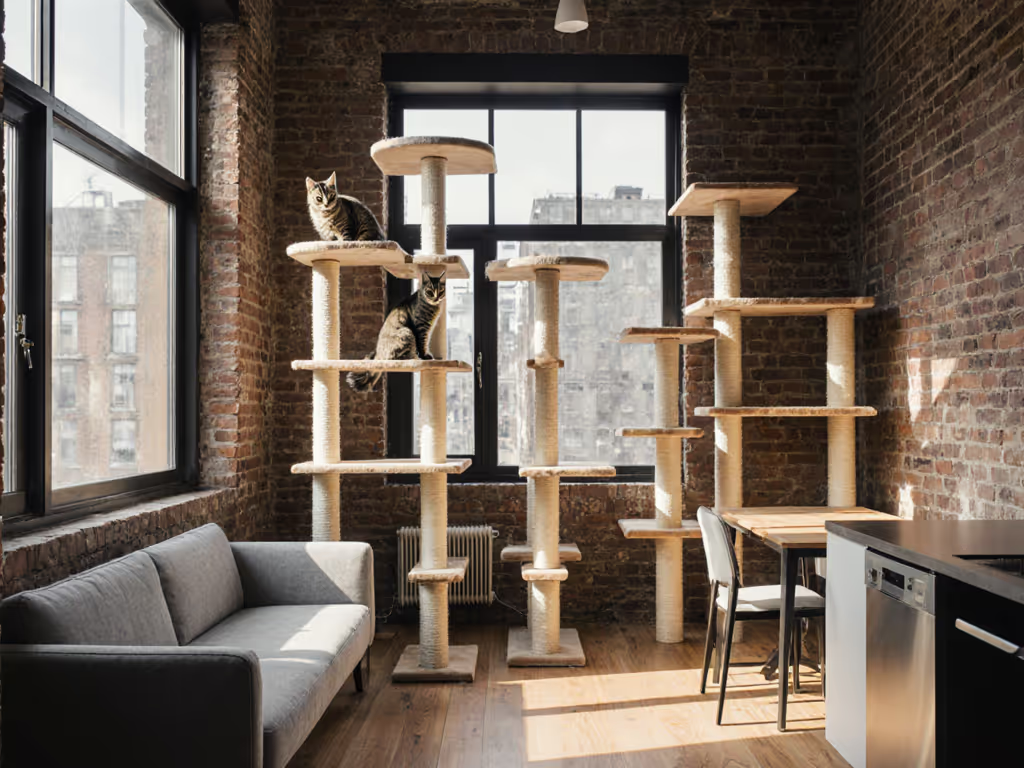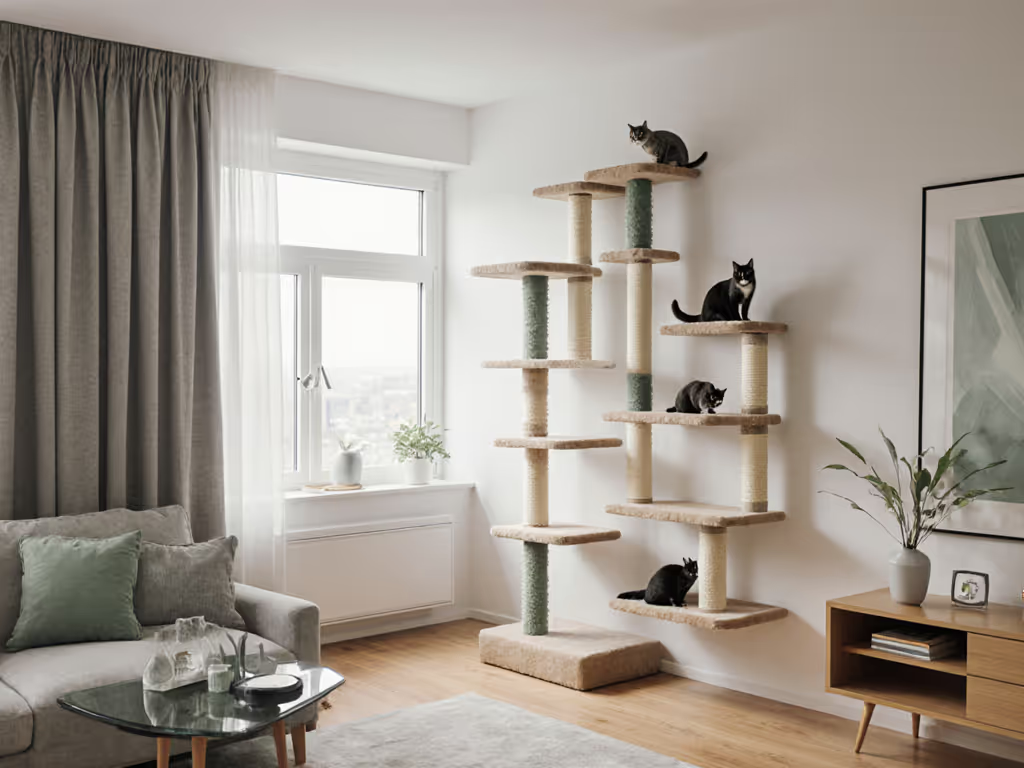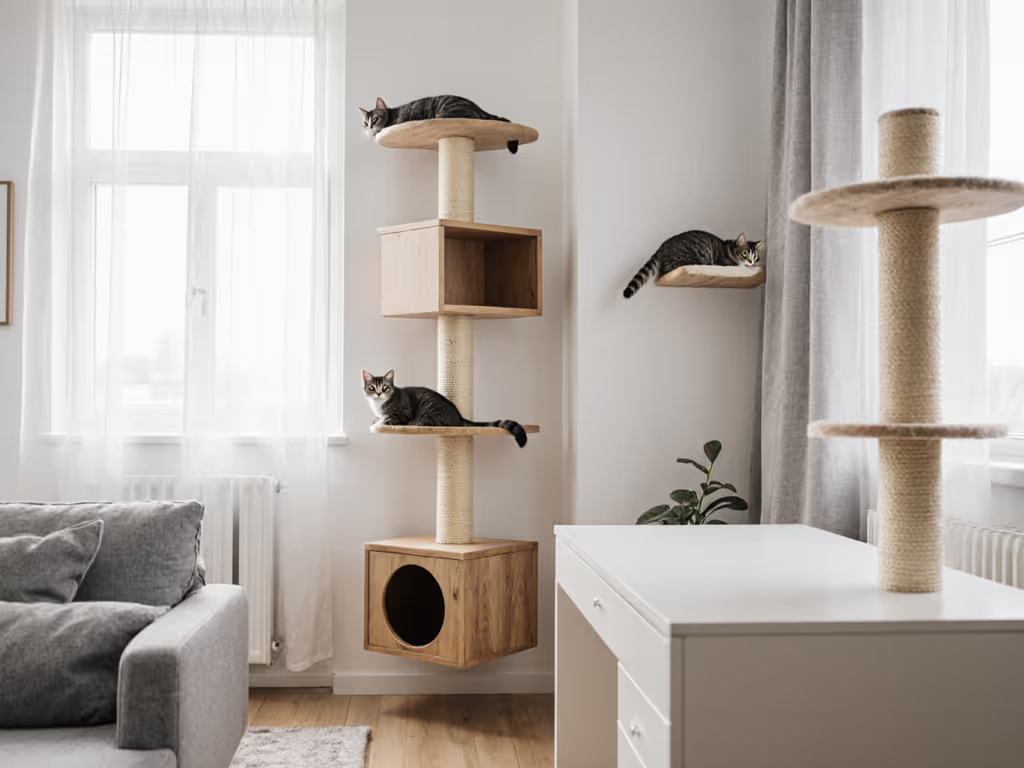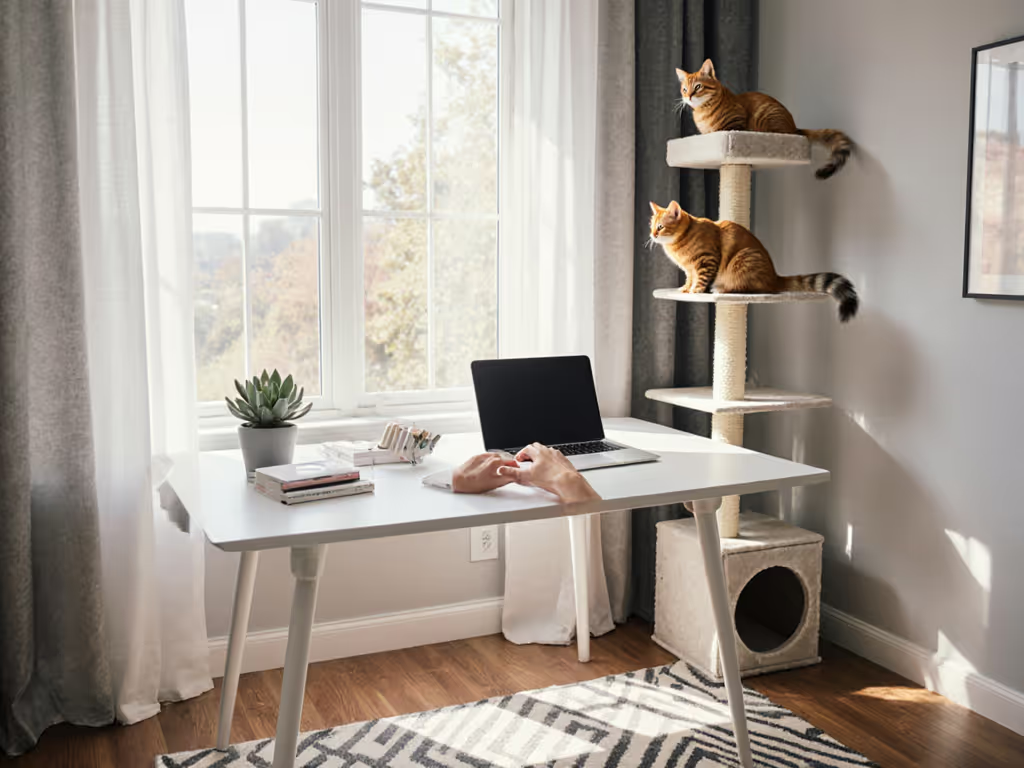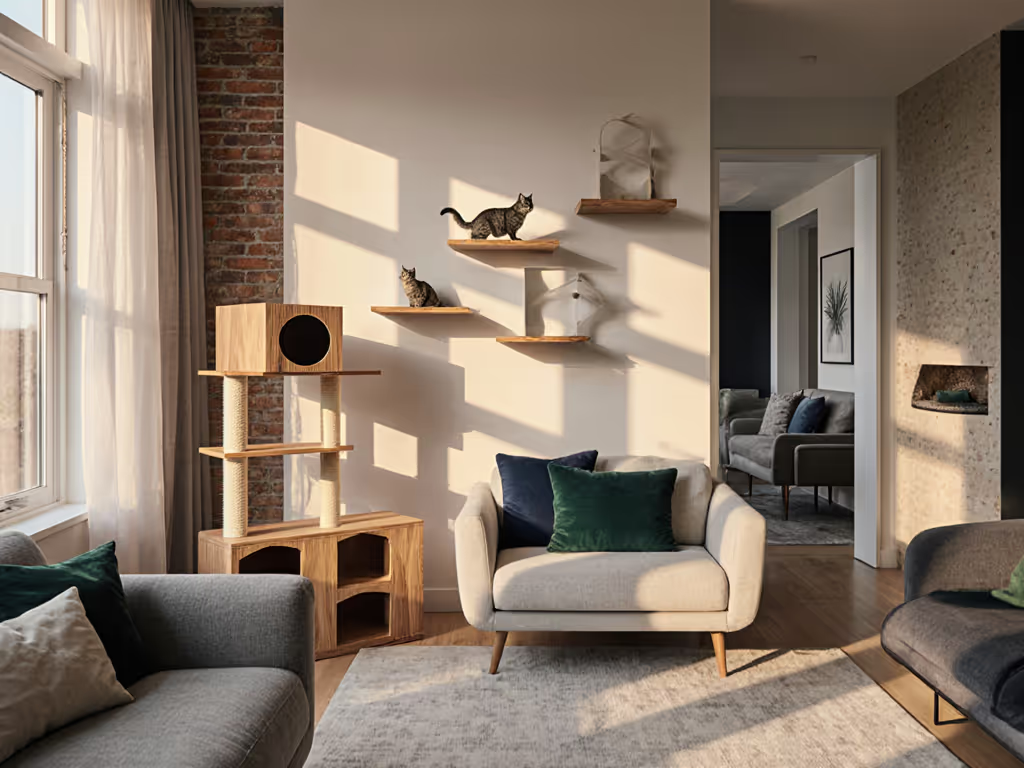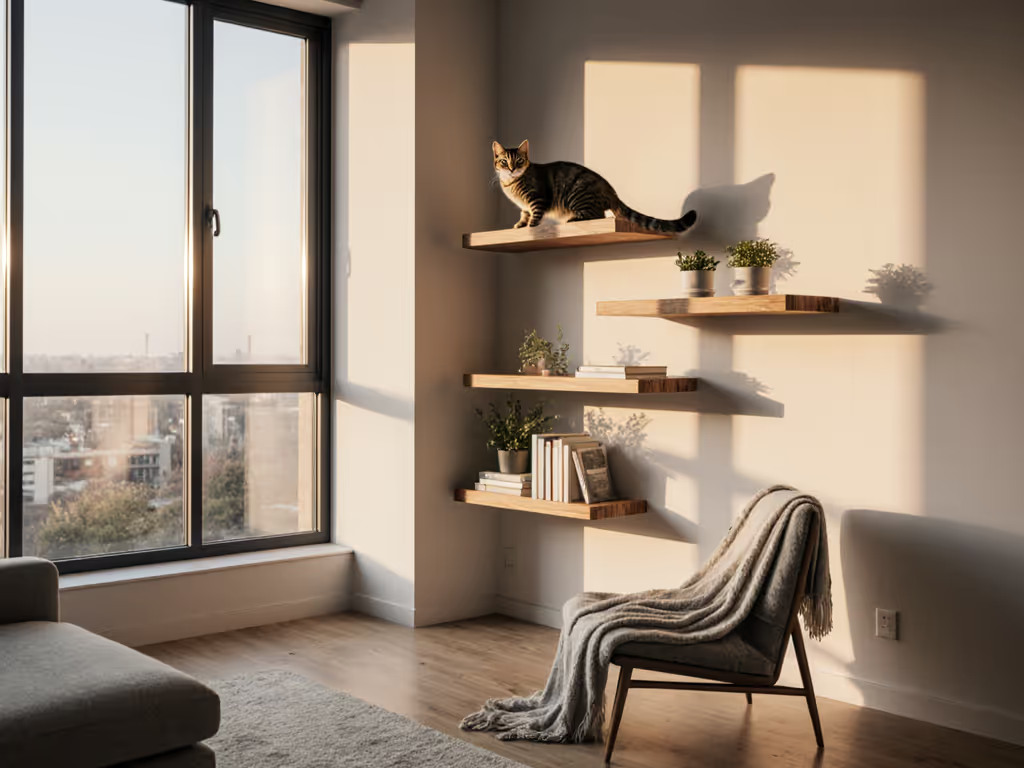When your home is cramped but your cat's needs aren't, finding the right small space cat furniture becomes a critical balancing act between your lifestyle and your feline's instincts. For apartment cat furniture that doesn't sacrifice function for form, understanding how to create vertical territory within limited square footage isn't just helpful, it's essential for both harmony and happiness. After working with countless urban dwellers trying to accommodate their cats in compact homes, I've seen a clear pattern: cats don't need more space; they need smarter space. Behavior blossoms when spaces speak your cat's native language.
You're not just furnishing a room, you're designing a functional landscape that addresses instincts while respecting your living constraints. This guide offers a precise, behavior-first roadmap to transform even the tiniest studio into a territory your cat will thrive in, with solutions that blend seamlessly into your aesthetic.
Step 1: Assess Your Cat's Instinctual Needs (The Foundation)
Before purchasing any piece of cat furniture, pause and observe your cat's natural behavior patterns. Cats operate on instinct first, our job is to create environments that honor those drives without disrupting our human spaces.
Key Instincts to Map:
- Vertical Territory Seeking: Cats naturally survey from heights for safety and security
- Scratch & Mark: A physical necessity for claw maintenance and territorial marking
- Hide & Retreat: Essential for stress reduction and emotional regulation
- Sun Tracking & Window Watching: Environmental enrichment through passive stimulation
This isn't just about keeping your home intact, it's about recognizing that when cats can't express natural behaviors, they'll find alternatives (often your couch or curtains). Meet the need, not the symptom.
Step 2: Audit Your Space Constraints (The Reality Check)
Most small-space cat owners make the same critical mistake: they try to fit standard cat furniture into cramped quarters rather than designing space specifically for limited footprints. The solution begins with a precise measurement and mapping process.
Strategic Space Assessment Checklist:
- Identify Underutilized Vertical Zones: Walls above doors, beside windows, narrow corridors
- Map Daily Sun Path: Note where natural light hits throughout the day for optimal napping spots
- Pinpoint High-Traffic Human Areas: Avoid placing critical cat zones where they'll feel constantly disrupted
- Analyze Clearances: Measure exact width between furniture to determine what narrow furniture can fit
A recent study on urban pet ownership found that apartments under 700 square feet see 43% more behavioral issues in cats when vertical space isn't maximized, compared to those that integrate height strategically.
Step 3: Design Your Vertical Territory Zones (The Framework)
Forget horizontal sprawl and think upward. In my years designing studio apartment cat setup solutions, I've seen dramatic shifts in cat behavior simply by creating layered territories. Your compact home should feature three essential vertical zones:
The Triple-Zone Territory Model
Safety Zone (Low Level)
- Purpose: Secure retreat when overwhelmed
- Ideal Height: Floor to 12"
- Features: Covered hideaway, soft bedding
Positive Zone (Mid Level)
- Purpose: Daily resting, eating, scratching
- Ideal Height: 12"-36"
- Features: Litter box placement (away from food), scratching surfaces
Observation Zone (High Level)
- Purpose: Surveillance, security, environmental enrichment
- Ideal Height: 36" and up
- Features: Window perches, wall shelves, elevated beds
This framework directly addresses why cats become anxious in small spaces: they lack environmental complexity. Designing with these zones creates predictability that reduces stress. Just like Miso, the shelter cat who wouldn't emerge from his carrier, once I mapped vertical pathways with staggered shelves and scent-safe scratching posts, he began to explore confidently from his new vantage points.
Step 4: Evaluate Space-Saving Furniture Solutions (The Practical Selection)
With your territory zones established, let's examine the most effective pieces of small space cat furniture on the market, based on my sensory-focused testing process that evaluates both feline response and human practicality.
Best Wall-Mounted Cat Shelves: The Ultimate Space Saver
Wall shelves transform unused vertical real estate into valuable cat territory without stealing a single inch of floor space. They're the most requested solution I provide for apartment cat furniture.
Why they work:
- Maintains open floor plan aesthetic
- Creates visual interest while serving functional purpose
- Allows cats to create their own route choices
For a deeper breakdown of when shelves beat trees in small spaces, read our wall shelves vs cat trees comparison.
Look for shelves with:
- Minimalist design that matches your decor
- Easy installation system (avoid complex brackets)
- Non-slip surfaces (felt pads or woven material)
- Graduated heights for natural pathway creation
Prosperpet Cat Wall Shelves stand out because they incorporate subtle bends that create natural resting positions cats prefer, rather than flat surfaces that force awkward postures. The modern matte finish blends with contemporary decor better than traditional carpeted options.
Smartest Compact Cat Tree Option: The Pawhut Floor-to-Ceiling Adjustable Staggered Climbing Tower
This tall, narrow tower (measuring just 12 inches deep) maximizes height without sprawl. What makes it exceptional is how it accommodates multiple cats without territorial conflict, each tier creates a "room" within the territory.
Why it excels in small spaces:
- Adjustable height (89-114.75" tall) fits most ceilings
- Minimal 30.25×12 inch footprint
- Durable metal skeleton with hard-wearing chipboard perches
- Can be placed against walls, beside cabinets, or in corners
Cats consistently choose this over bulkier towers in my observation sessions because the staggered design creates multiple pathway options, offering choice, which reduces anxiety in multi-cat households. Just verify that your ceiling height matches the product specifications before purchase.
Underrated Game-Changer: Chair Hang Cat Hammocks
These attach beneath your existing chairs, creating cozy, hidden nooks for cats without adding furniture. They're the perfect solution when floor and wall space are both spoken for.
Why they win in tiny spaces:
- Absolutely no additional space required
- Creates privacy without visual clutter
- Offers gentle movement that calms anxious cats
The K&H Pet Products Scales Cat Bed works remarkably well for this purpose, its secure attachment system and breathable mesh make it safer than cheaper alternatives. Cats feel incredibly secure in these suspended spots; the gentle swaying mimics the comforting motion of being carried as kittens.
Designer-Grade Alternative: The Sebastian Modern Cat Tree
For those who won't compromise on aesthetics but need function, this minimalist cat tree resembles modern furniture more than pet equipment. Available in black or white, it features clean lines and understated textures that blend with contemporary decor.
Why it's worth considering:
- Doubles as room divider in studio apartments
- Multi-level design includes scratching surfaces, perches, and hideaways
- Higher price point reflects superior build quality and longevity
- Complements modern interiors instead of clashing with them
Step 5: Create Multi-Functional Cat Furniture Configurations (The Space-Sharing Strategy)
The most successful small space cat furniture setups don't exist in isolation, they integrate with your existing living space in ways that serve both you and your cat.
Resource-Stacking Techniques:
- Bookshelf Dual-Use: Install small shelves on existing bookcases that create pathways between rooms
- Desk Integration: Attach a narrow perch to your workspace that lets your cat observe without disrupting
- Doorway Perches: Utilize dead space above doorframes for quick observation posts
- Staircase Modifications: Add scratch-friendly surfaces to stair risers
The goal isn't just to save space, it's to create integrated zones where your cat feels welcome without competing for your space. This approach transforms potential conflict points (like your desk or window) into connection opportunities.
Step 6: Implementation & Adjustment Process (The Gentle Rollout)
Cats resist abrupt environmental changes, so introduce your new vertical cat space gradually with an intentional, gentle transition.
Step-by-Step Introduction:
- Anchor with Scent: Place familiar bedding or blanket on new surfaces before installation
- Food Lure: Place meals on key levels to create positive associations
- Progressive Access: Initially block higher levels, gradually opening more territory
- Gentle Encouragement: Use wand toys to guide movement without forcing
During this process, monitor your cat's body language closely. Ears forward, tail up, and relaxed posture indicate comfort; flattened ears, tucked tail, or hiding signal overwhelm. If your cat avoids certain levels, reposition them slightly or add a familiar scent marker nearby.
Your Actionable Next Step
Today, complete just one task from this roadmap:
- Map your cat's current preferred spots with masking tape on walls/floor
- Measure one vertical zone (like beside your window) for potential wall shelves
- Take photos of three problem areas where your cat has claimed inappropriate territory
Consistency beats complexity. A single well-placed perch that meets your cat's observation needs will transform behavior more dramatically than multiple ill-placed pieces of furniture.
This isn't about buying more, it's about designing smarter. When we honor space as shared territory rather than divided real estate, both cats and humans find peace within compact walls. As I've witnessed time and again with sanctuary cats transitioning to home environments, the right spatial arrangement creates harmony that no amount of training can achieve alone.
